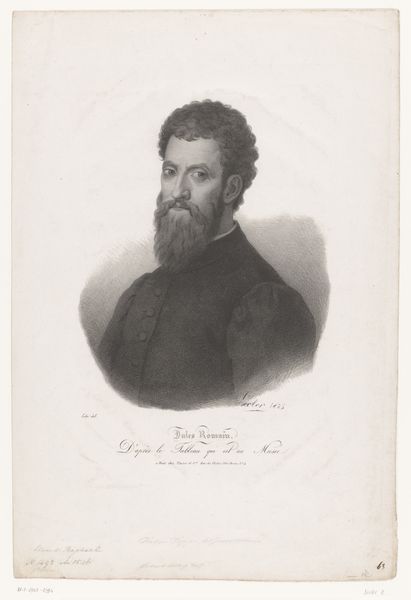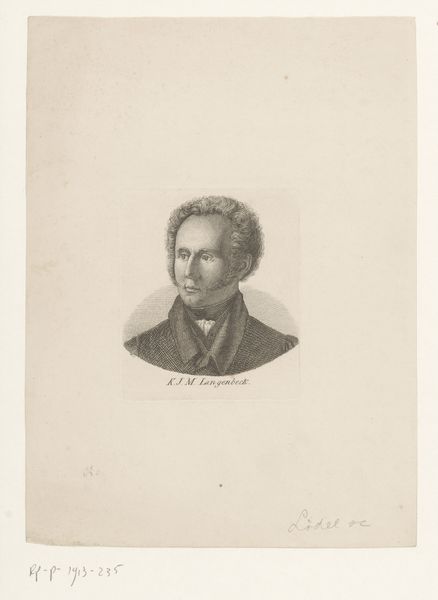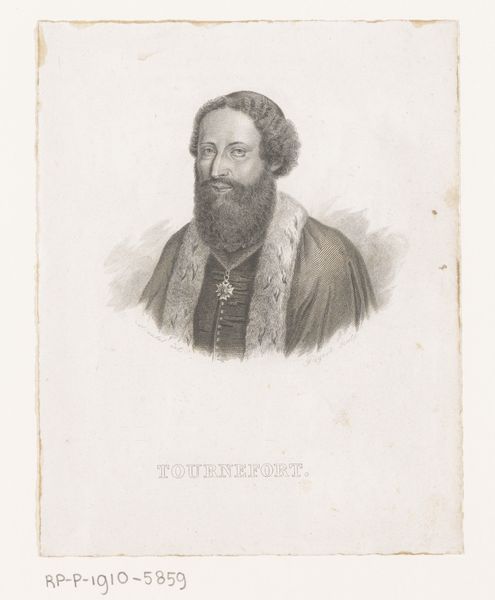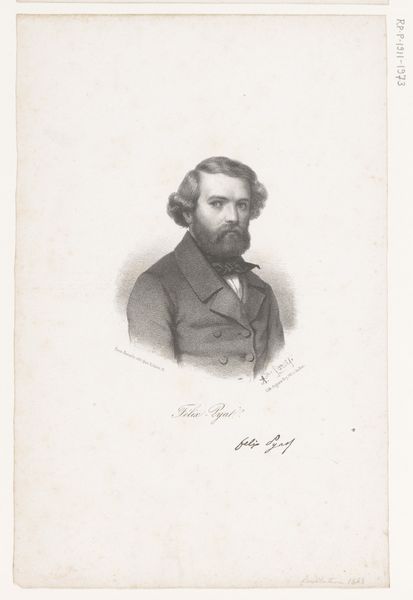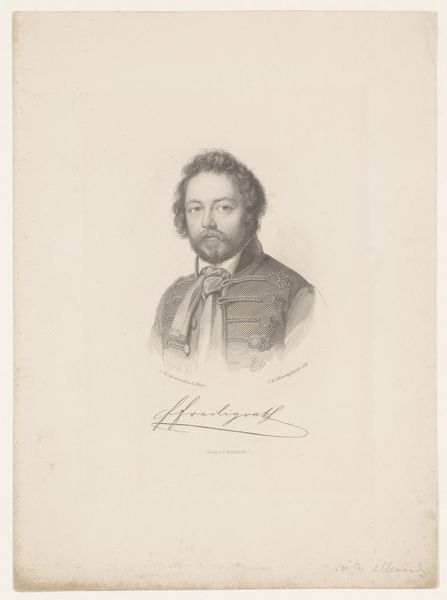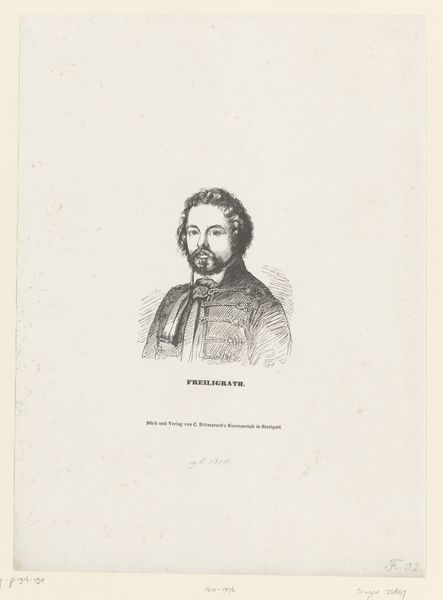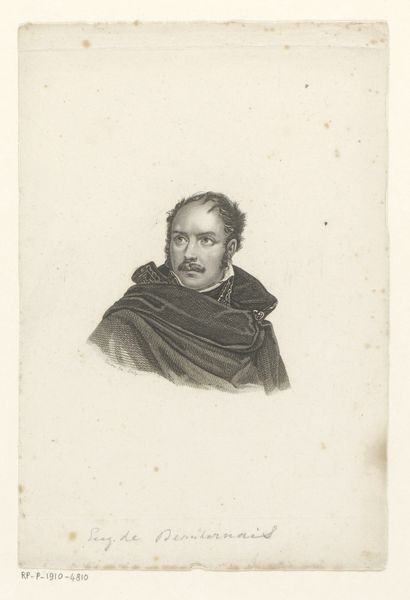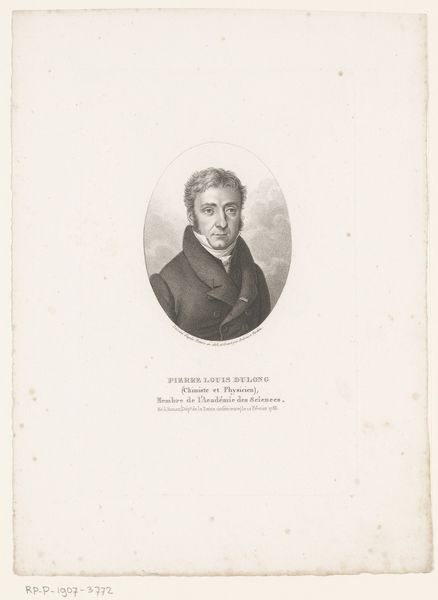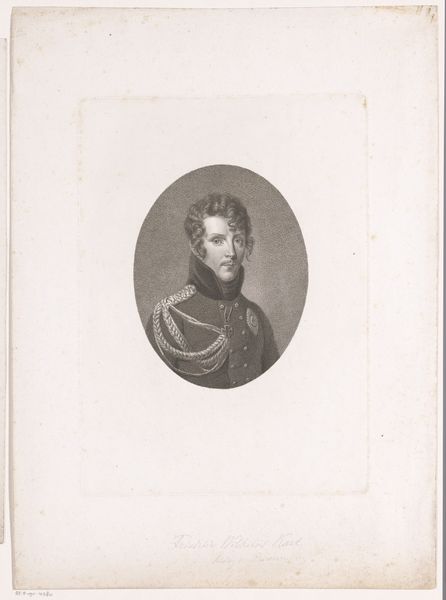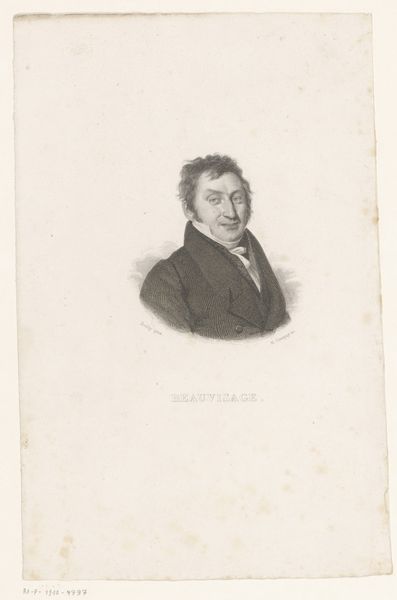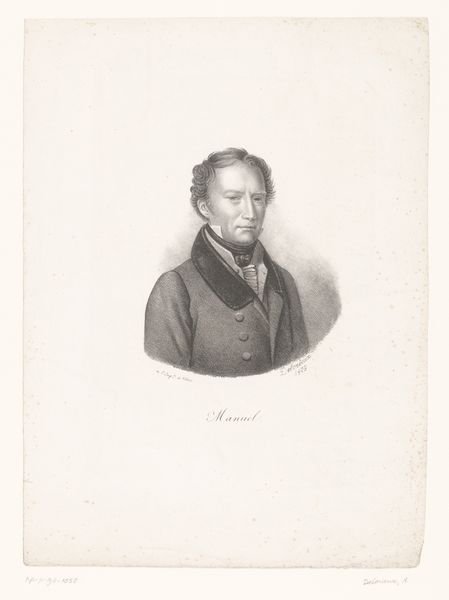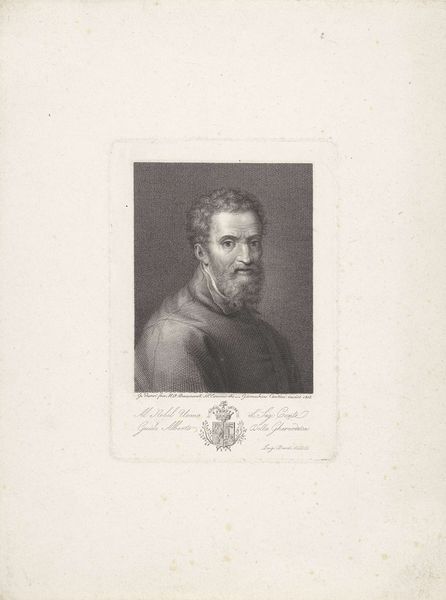
drawing, print, paper, pencil
#
portrait
#
pencil drawn
#
drawing
# print
#
paper
#
pencil drawing
#
romanticism
#
pencil
Dimensions: height 495 mm, width 341 mm
Copyright: Rijks Museum: Open Domain
Jean-Baptiste Mauzaisse created this portrait of Michelangelo using lithography, a printmaking technique, sometime before 1844. The lithographic process begins with a smooth stone, traditionally limestone, on which the artist draws an image using a greasy crayon or ink. The stone is then treated with a chemical solution that fixes the drawing, allowing the artist to dampen the stone and apply oil-based ink. The ink adheres only to the drawn areas, repelled by the wet, blank areas of the stone. Finally, the image is transferred onto paper using a press. Mauzaisse's skilled manipulation of light and shadow creates depth and texture in Michelangelo's face, beard, and clothing. The lithographic process allowed for the relatively quick reproduction of images, making art more accessible to a wider audience. While not as direct as painting or sculpting, lithography still requires a high degree of skill and craftsmanship. By considering the materials, techniques, and social context of its production, we can better understand the artistic and cultural significance of this portrait.
Comments
No comments
Be the first to comment and join the conversation on the ultimate creative platform.
